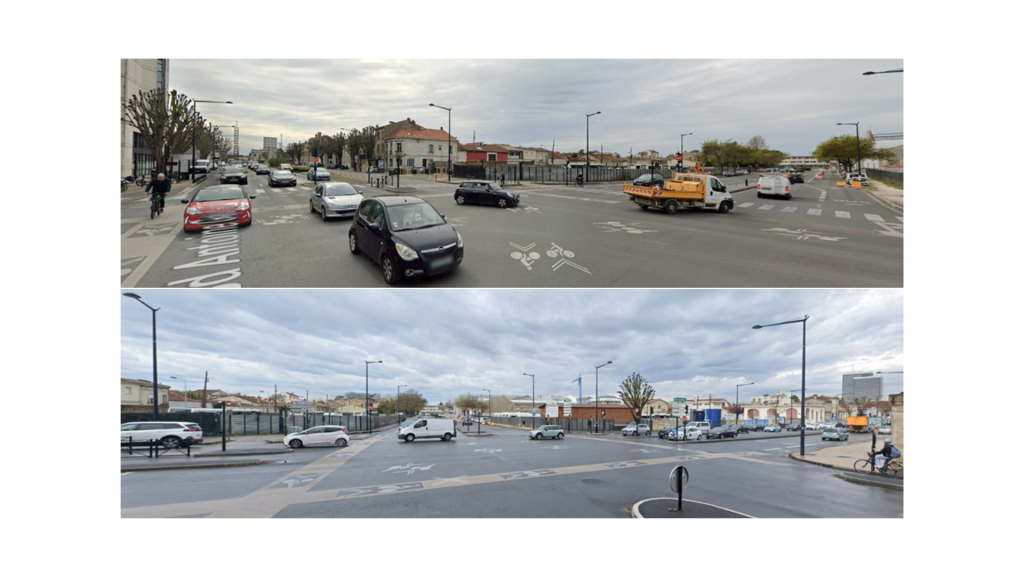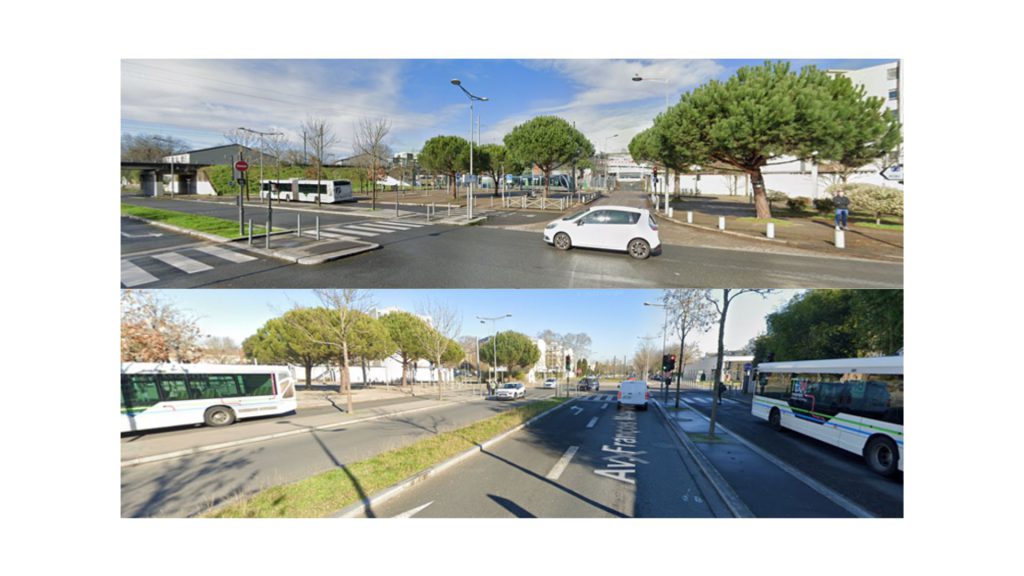Enforcing multimodal priority policy through Traffic Light control at local intersections. Bordeaux Metropolis (814,049 inhabitants) is a key urban node on the Atlantic Corridor, firmly positioned among Europe’s sustainable metropolises (#12 in the Global Bicycle Cities Index, winner of the call for 100 climate-neutral and smart cities by 2030, …). Bordeaux Métropole [1] has been committed to managing traffic issues for several decades, especially with a centralized urban TMS GERTRUDE, a Real Time Adaptive ITS. More recently, Bordeaux has also actively developed traffic operations capabilities to fully take advantage of Connected and Cooperative Intelligent Transport Systems (C-ITS) technologies. The new roadmap for urban mobility (SUMP 2020-2030) focuses particularly on two challenges: decongesting the metropolitan area and decarbonizing mobility especially by reinforcing the trend towards more cycling, walking and car sharing.

Currently, the TMS Gertrude provides absolute priority to bus and tram at signalized intersection and applies centralized strategies adapted to real traffic conditions leading to significant gains in terms of journey times. The aim of the Bordeaux pilot is to complement the actual system by testing adynamic and decentralized prioritization solution at signalized intersection level that is agile, and yet successfully cater for the metropolis’ multimodal ambitions. Within the wider framework of the DIT4TraM project, the two main use cases are granting secondary priority level to (i) cyclists and (ii) carpoolers. The main challenge is that such users are more numerous than public transport vehicles and widely spread over the different entry legs. Coordinated by Bordeaux Métropole, this pilot gathers Gertrude Saem [2] (TMS provider), Neogls (C-ITS services provider), Uge (University Gustave Eiffel), and TU Delft (leader of WP2) which innovates in new algorithms (Model Predictive Control) with advanced priority rules for mode-dependent dynamic and decentralized traffic in line with the multimodal policy. C-ITS technologies are paramount to monitor the intersections and segregate users.
Bordeaux Métropole has in charge of preparing and monitoring Field Operational Tests (FOTs), with partners and the following main common objectives:
- Test and learn from the application of new technologies, and demonstrate by assessment their relevance, robustness, interoperability, and continuity of service in urban environment by validating provision under operational hazard, and in real-life conditions while fulfilling all safety rules.
- Further develop the impact assessment results towards concrete and directed deployment recommendations linked to policy objectives.
- Raise awareness of local policy makers on capacity to bring concrete solutions to support a policy of wide-ranging traffic light priorities.
- Strengthen the engagement between public and private stakeholders involved in C-ITS/TMS chain from implementation to operations.
It is expected that the solution will improve utilization of road network, minimize travel times, and give priority to cyclists along bikes rapid transit routes and carpoolers to access to the park-and-ride (P+R) facilities.

- Identification phase
- Experimental plan including conceptual framework, research design and data needs.
- Selection of the two convenient signalized intersections to be tested.
- Implementation phase
- Design of an operation framework to carry out FOTs, the implementation of IT and network MQTT-based architecture for monitoring FOTs and ensuring a high availability of systems (C-ITS, TMS, TUD algorithms), and the real-time collection of data (compliant with ETSI C-ITS standards).
- Calibration of FOT users’ panel and recruitment.C-ITS smartphone application for priority request.Run the systems in preproduction mode, and TUD control algorithms under validation: communication protocol, simulation-based validation of pilot and control algorithms (MPC: constraint satisfying, trades off optimality for real-time feasibility).
- Safe fallback procedure to TMS Gertrude during operations.
- Pilot operations and data collection
- Production mode scheduled for mid-September 2023
- Ongoing FOTs (3 weeks for each intersection) scheduled for Oct. and Nov. 2023 respectively.
Contribution to deliverables:
- D 2.2: Bordeaux pilot preparations theory, algorithm, and simulation.
- D 6.1: Future traffic and mobility management system requirements and use case.
- D 6.2: Future traffic and mobility management system architecture.
- D 7.2 (on going): DIT4TraM pilot areas activities – initial version.
- D 8.2: Value proposition
50th annual congress of the French national ITS association (ATEC ITS France), “C-ITS, a technical building block of smart city large-scale experimentation”.

[1] The public cooperation body bringing together the 28 municipalities of the Bordeaux metropolitan area, including the city of Bordeaux.
[2] Gertrude SAEM is a subsidiary of Bordeaux Metropole, the City of Bordeaux, and the city of Mérignac.